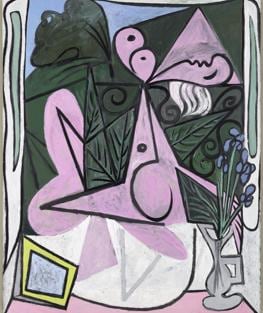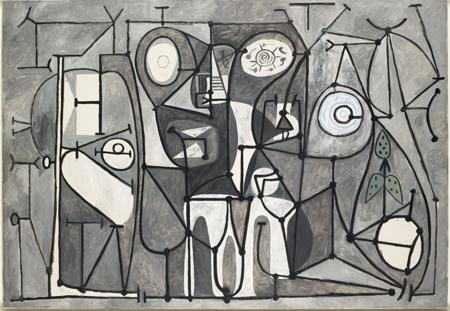The “abstract genius” Picasso is in Brussels
[ad_1]
Picasso, therefore, as a true precursor of abstraction, along the lines of a jagged path, made up of comings and goings and refusals, progress and forced backwards; courses and appeals that are revealed in this original exhibition with constancy of vision and, according to a path that surprises positively for narrative clarity and richness of contributions.
Going through the exhibition since the appearance of the preparatory studies for Les Demoiselles d’Avignon (1907), thealea, the dice, now that Brussel puts the accent on it, appears as indissolubly drawn, despite the “negative” reflections of the great master. Because the one with abstraction, starting from 1907 with on display Femme aus main jointes (études pour Les Demoiselles d’Avignon, Musées national Picasso-Paris, dation Pablo Picasso, 1979) will remain a complex and intriguing relationship, but always fruitful, until the artist’s last late gestural experiments. The small and significant one is still present in 1907 Petite Nu de dos aux bras levés (études pour Les Demoiselles d’Avignon). And again the Paysage liié au “Moissonneurs”: arbres, also from 1907 not to mention the essential “Arbre“Of 1907 (Musées national Picasso-Paris, dation Pablo Picasso, 1979), where the young Picasso proposes his reinterpretation of the principles of Cezanne’s painting and which will make Pierre Daix comment that”it is actually the first abstract painting in the history of modern art“.
“Arbre“
A painting that will remain preserved for a long time and well hidden in the artist’s atelier and that will only be exhibited for the first time in 1966, finally accounting for the radical nature of Picasso’s plastic experimentation. Experimentation which is complemented by the various studies pour Trois femmesto get to the Paysage aux deux figures from 1908 also from the Musées national Picasso-Paris with which the artist, in the geometrization of the landscape begun in Gòsol in 1906, inserts an even more unreal dimension by adding nudes between the trunks of the trees.
Michel Draguet, director general of the Musées royaux des Beaux-arts de Belgique
There Tête de femme (Fernande) of 1909 testifies in its fragmentation and rupture of the plans, which favor the play of light and shadow, Picasso’s attention to the experiments of the time, “in particular the attention to the Futurists and to Umberto Boccioni and Balla in what appears to be a section Italian ”as Michel Draguet, director general of the Musées royaux des Beaux-arts de Belgique tells us. A Picasso always attentive to “the avant-garde” and who – as Draguet specifies – is “close to what Kandinsky defines Abstraktia; a symbolist process of decanting reality to condense the subjective significance inscribed in the unique experience of the action of rethinking and of the pictorial gesture ”.
Cecile Debray, president of the Musées national Picasso-Paris
Cecile Debray, president of the Musées national Picasso-Paris, another curator of the exhibition is particularly keen to highlight how “this exhibition is an exciting unpublished novel, in its focus on Picasso’s genesis and on his experiments in his atelier (photographically here very well documenate, ed). Just as she reveals her intimate connection with the essential principles of abstraction within her creative process and which are very well documented by the collections of the Musées national Picasso-Paris which preserves the most beautiful and fundamental testimonies ”.
[ad_2]
Source link













